Once you've identified the audiences your prospect might be interested in, it's time to determine what strategy you're going to use when doing advanced targeting on Facebook.
You don't want to waste all your budget testing too many irrelevant interests or doing too much testing.
Here we share 7 advanced targeting strategies for your Facebook ads. These strategies apply to the interests, demographics and behaviors you want to target!
Warning! Advanced interest-based targeting is not just a stacking of interests and requires some explanation before it can be used properly.
We have listed some strategies below with their advantages and disadvantages.
It's up to you to make your choice according to your audience!
These are techniques that will save you time and money if well applied!
Strategy #1: Target a single interest per ad set
After you've done your audience research, you'll find yourself with a large list of audiences to test.
And now you're probably thinking, you might as well test them one by one!
This makes sense because when you include multiple interests in an ad set, it's impossible to determine which interests convert.
This explains why some advertisers like to start by using one interest per ad set in their testing phase.
They are trying to validate the first hypothesis: "Is the audience interested in my ad?

Example of an ad set with a single interest for advanced targeting, on the Facebook Ad Manager
The limitations of advanced targeting with a single interest
❌ This strategy works BUT may require a lot of budget depending on how many interests you want to test.
❌ You need to be careful about overlapping your audiences so you don't bid against yourself.
Ideally, try to have less than 20% overlap.
Otherwise, combine interests in the same ad set to reduce your ad costs.
The Benefits of targeting a single interest for your advanced targeting
✅ It's a way to test audience after audience and tease out the ones that work for you.
✅ After testing hyper-targeting to start your testing, you can use this strategy to switch to the larger multi-million audiences once you have enough data.
Strategy #2: Stacking audiences in your Interest Stacking
What we call audience stacking is adding multiple interests into the first level of the "advanced targeting" portion of your Facebook ad set.
This will expand your audience and include more people.
The total audience will be the sum of the interests you've entered.
For example, if you do the following advanced targeting:
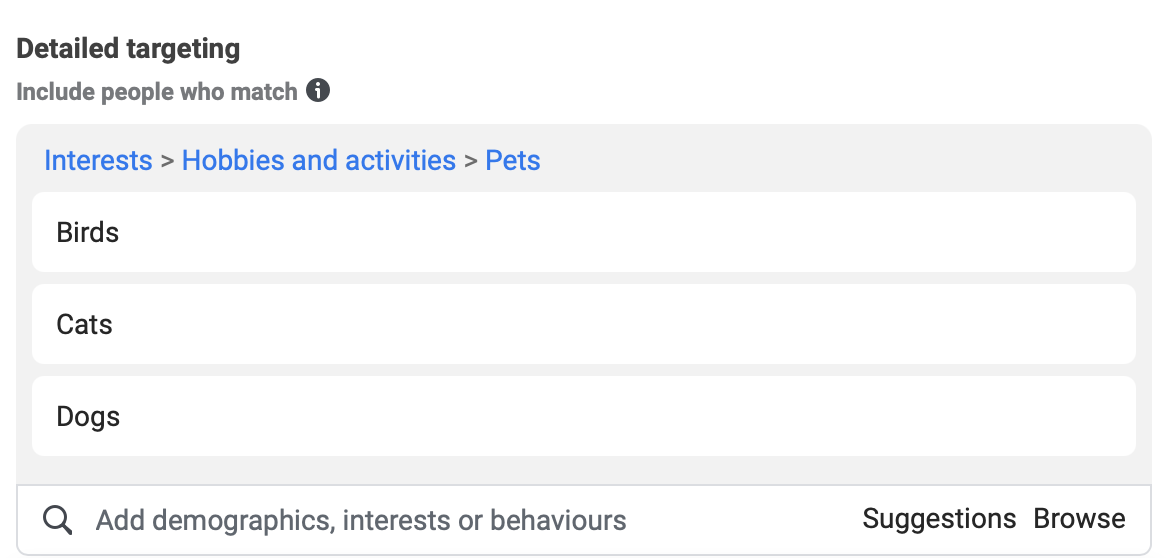
You are trying to reach people who like "cats" or "dogs" or "birds" or a combination of all 3 audiences!
That's a huge and very large audience of several millions people.
When you insert multiple audiences into the same level of your advanced targeting, you use the "OR" condition between the different interests you add.
👉 This inflates the size of your potential coverage.
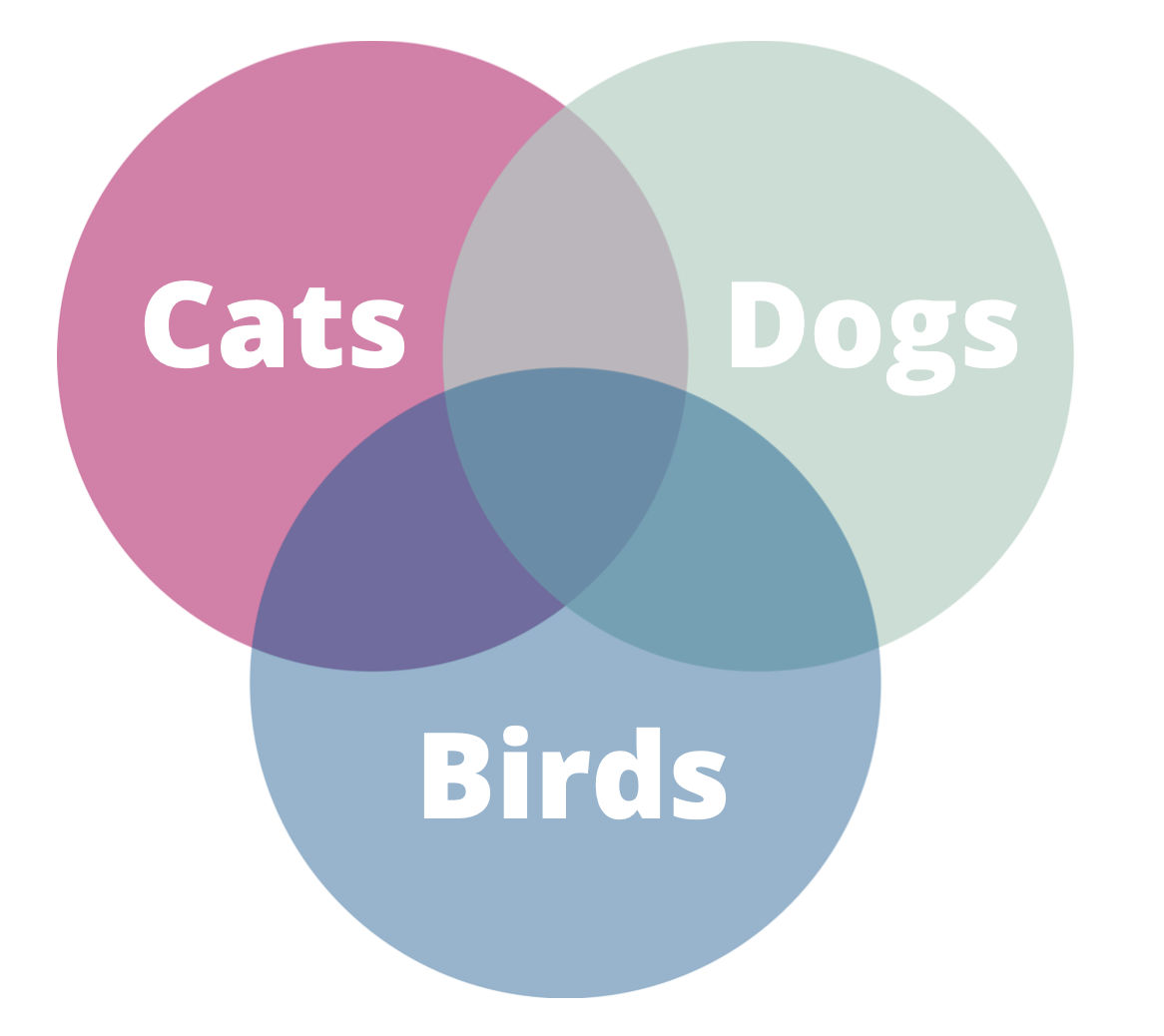
In this example, the huge blue shape is the audience you are trying to target
Here you are targeting all the people who like cats or dogs or birds.
If you ask us, this is not very specific advanced targeting with audiences as broad and generic as "cats", "dogs" and "birds".
The limitations of audience stacking in advanced targeting
❌Avoid pairing overly broad and generic interests as seen above.
You risk spending more budget before Facebook's algorithm finds your buyers in the case of e-commerce.
❌Avoid pairing a broad interest that already contains users of a specific interest.
For example, if you decide to target ski brands like "Atomic", "Nordica" which are ski brands.
Then, add the broad and generic interest "ski", you will not benefit from the advantages of your specific targeting around the brands.
Your "Atomic" and "Nordica" targeting of highly qualified ski shoppers will be diluted by people who say they "love" skiing.
As a result, you could spend quite a bit of money before you really reach the highly qualified people who are fans of the Atomic and Nordica brands.
When to use this technique?
✅ Prefer this technique to "inflate" the potential reach of your Facebook advanced targeting.
For example, when you have several small interests and you want to reach a potential reach that you are set, you can add multiple audiences to increase the audience size.
✅ This technique is very powerful when you are trying to target multiple small brands and Facebook pages that your customers might be interested in.
✅ Use this technique in the case of too much bidding overlap on your advanced targeting.
✅ Facebook likes large audiences when you scale. To accommodate this, once you know the winning interests (as a result of your testing), combine them into one ad set to scale the audience with this technique.
Strategy #3: Hyper-segmentation targeting
As described in another article, it is possible that Facebook incorrectly associates an interest with a user profile.
You can see this for yourself, by analyzing your advertising preferences.
Indeed, you may be considered as interested in a particular interest when this is not the case at all!
This is a weakness of the algorithm when you are an advertiser.
So here is the segmentation strategy that aims to prevent these categorization "accidents" from Facebook.
Depending on how you use it, it allows you to target highly qualified prospects.
You will often come across this technique under the term laser targeting.
This is laser targeting at the level of your advanced targeting (through interests, behaviors and demographics).
We don't recommend laser targeting based on gender or age because you may be closing too many doors.
For example, even if you know your customers are women between 24 and 30 years old, don't just target women in that age range. Target men as well, as they may also enter a gift buying cycle.
Let's talk about laser targeting and why it could help you!
Why do laser targeting?
The principle of hyper targeting is as follows:
Imagine you walk into a room of 1000 people and ask them "Who knows Football?".
Normally, 100% of the people will answer that they know the sport.
Now ask them "Who knows Zidane?"
About 80% of people will say they know Zinédine Zidane and chances are they will leave a little tear when they think about the 3-0 in 1998.
Let's go further and ask them "Who knows Pierluigi Collina?
There is a great chance that a small handful of your audience will answer positively to this last question.
And those who answer are the people you want to target because they are real soccer fans.
They know this legendary soccer referee and will be the most likely to buy your soccer related products.
How does laser targeting by segmentation work?
To do laser targeting and reach the users who are really interested in your product or service, you need to have several specific and nested audiences that you will segment to reach a better quality audience:
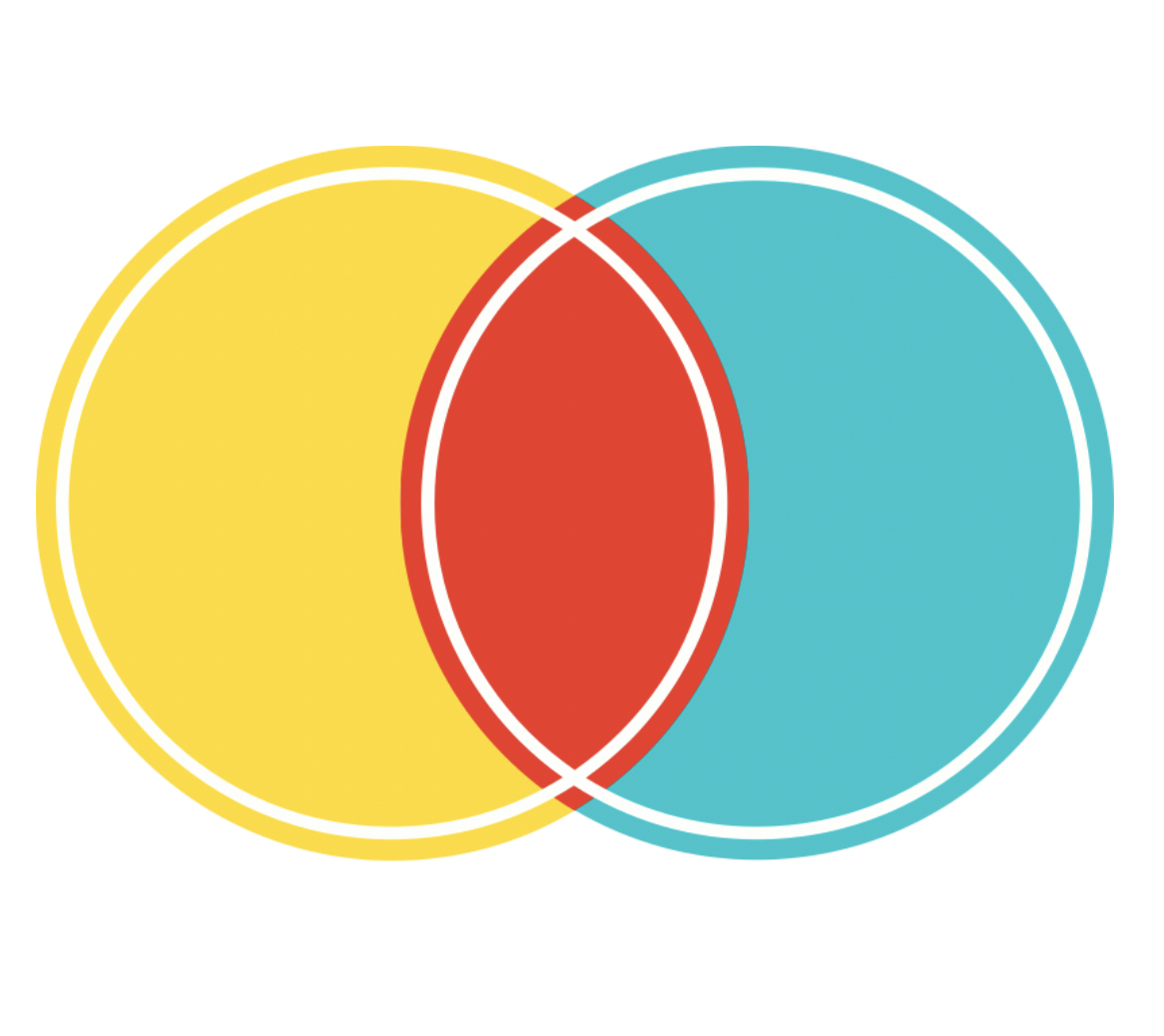
Laser targeting allows you to reach this red zone
Ok and concretely how do we do it then?
Once you have your very specific audiences to which only real fans could respond, you will use advanced targeting segmentation.
Segmentation consists in exploiting the "levels" of advanced targeting present in the Facebook ad manager.
To do this, you need to use multiple levels in your advanced targeting, refining the audiences each time.
Notice the words "Include people who match" as well as "and must also match" in the image below:
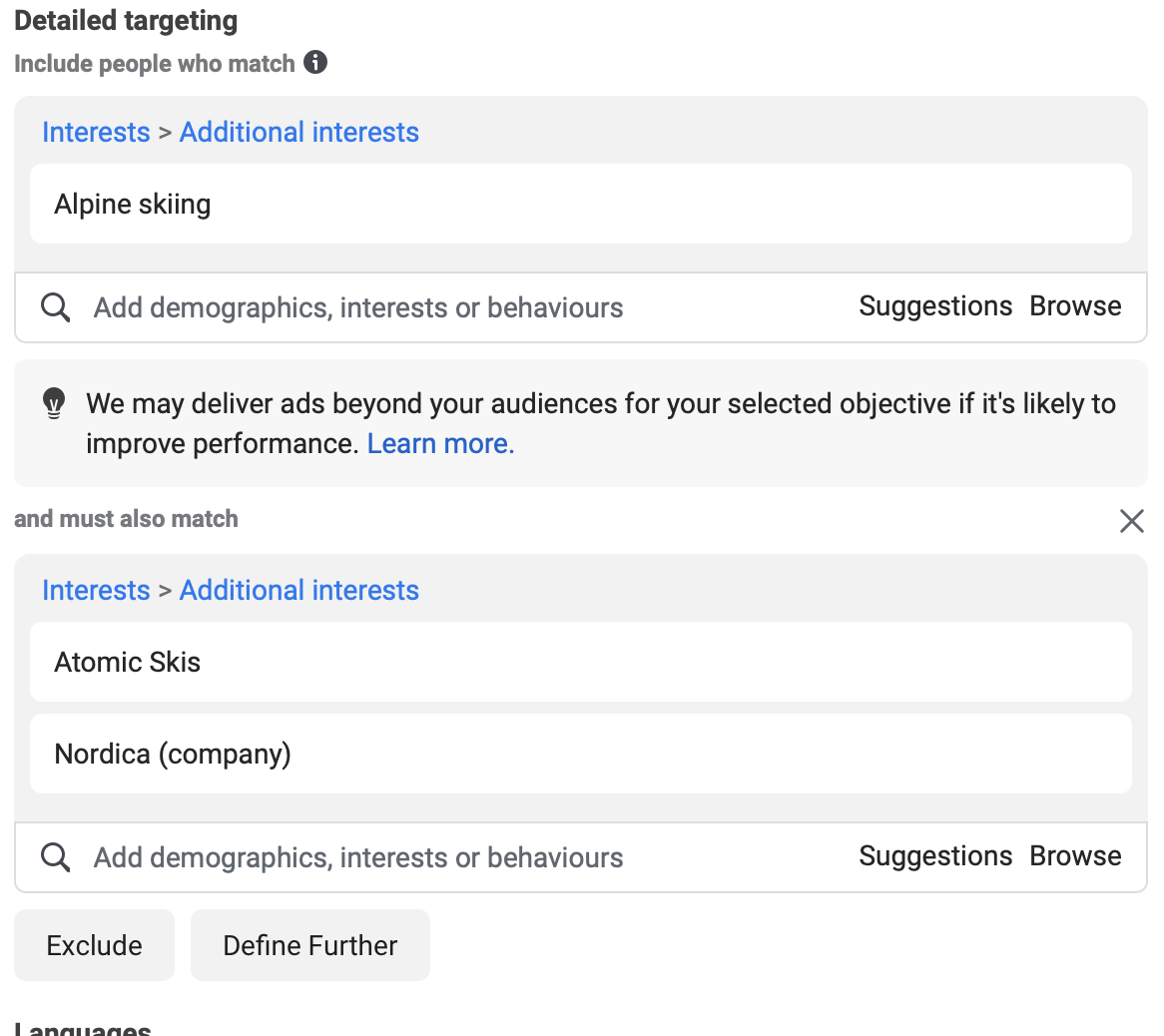
In this example, you are sure to target people interested in Alpine Skiing and who like at least one brand in the second tier. You could go even further by adding other levels and many more interests per level!
With this way, you are sure to reach people who meet at least 1 criterion of each level.
Tip: When you add only one interest per segmentation level, the reach decreases drastically.
Adding multiple audiences per level increases the size of the audience (remember the "OR" inclusion criteria discussed above)
Managing the balance of reach and relevance
Remember to check the potential reach when using this technique!
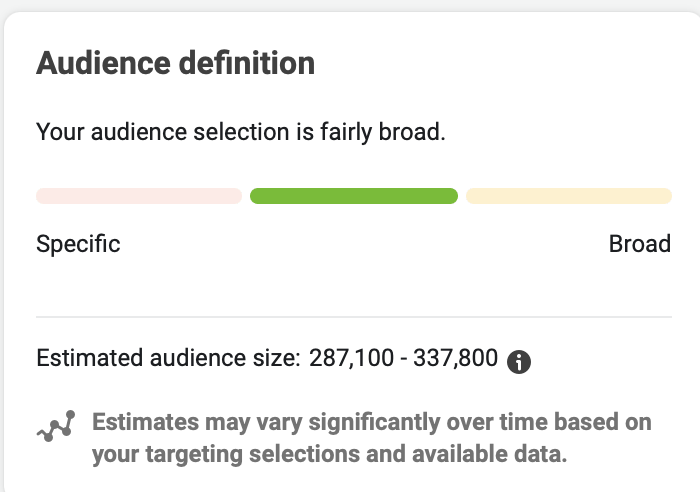
As a general rule, try to have an audience size above 200,000 people for conversion campaigns.
PS : This value may vary depending on your budget and campaign objective.
Benefits of hyper-targeting by segmentation
✅ You exclude as many "accidental likes" as possible from advanced targeting to reach only people who are highly interested in a topic.
✅ Your advertising costs decrease and your ROI increases because you're reaching really hot people.
Limitations of hyper-targeting
❌ As seen above, it's the balance between reach and relevance that can get problematic quickly.
Especially if you're in small markets with small audiences...
❌ Audience research can be time consuming and risky without a tool. That's why we created Targetez!
Strategy #4: Make exclusions
They say that opposites attract, that may be true for relationships but not for advertising.
Sometimes it's useful and interesting to exploit the exclusion part of advanced targeting.
As you may have noticed, luxury brands don't usually do promotions or clearance sales.
This would damage the brand's reputation and the target audience is often well-to-do people who don't count their money.
Based on this principle, we could imagine the following targeting:

By targeting "Luxury goods" we had an audience of 12 million people, which is quite enormous and probably not very qualitative.
Adding "Promotions" and "Discount stores" in the exclusions allows us to have a final audience of 1.8 million people who will be much more qualified.
Similarly, if you advertise a fast food or junk food chain, it can be interesting to exclude people interested in organic products and healthy food...
Facebook advanced targeting on fast food with organic food exclusion
The limits of this strategy
❌ You can free yourself from a part of users if they have been miscategorized by Facebook.
But this should only affect a small portion of the audience if that's the case.
Strategy #5: Combine interests with behavior or demographic targeting
Another very powerful technique for your advanced targeting is to combine interests with behavior.
A fairly effective combination is to combine an interest with a buying behavior.
For example, if you sell sunglasses, you can target different brands of glasses. Then refine the audience with the "active buyer" behavior:
Here, the "active buyers" behavior corresponds to "People who clicked the Buy call-to-action button in the past week."
This gives us an audience of 850,000 people who are interested in a few sunglasses brands and have expressed a purchase intent in the past week.

Another example, is to couple your interests with a "life event" demographic targeting.
There are many powerful "life events" (which are behaviors for Facebook).
TargetEZ software allows direct access to all interests, behaviors and demographics in a few clicks.
The limitations of this strategy
❌ Avoid using too many behaviors in the advanced targeting of your ad set or you will end up with higher CPMs.
Strategy #6: Redefine your custom audiences based on interests.
Facebook offers many retargeting opportunities for advertisers through different types of custom audiences.
You can retarget :
- Visitors to your website
- Visitors who have visited a specific page of your website (e.g. the shopping cart for an
e-commerce website)
- Your customer list
- People who interacted with your Facebook or Instagram page
- People who have seen your Facebook videos
In general, personalized audiences are "warm" or "hot" audiences.
They have already interacted with your content or your site and already know you.
So these are audiences that give good conversion results.
It is possible to couple these personalized audiences with centers of interest!
For example, you can target visitors of your website who are also interested in Technology.
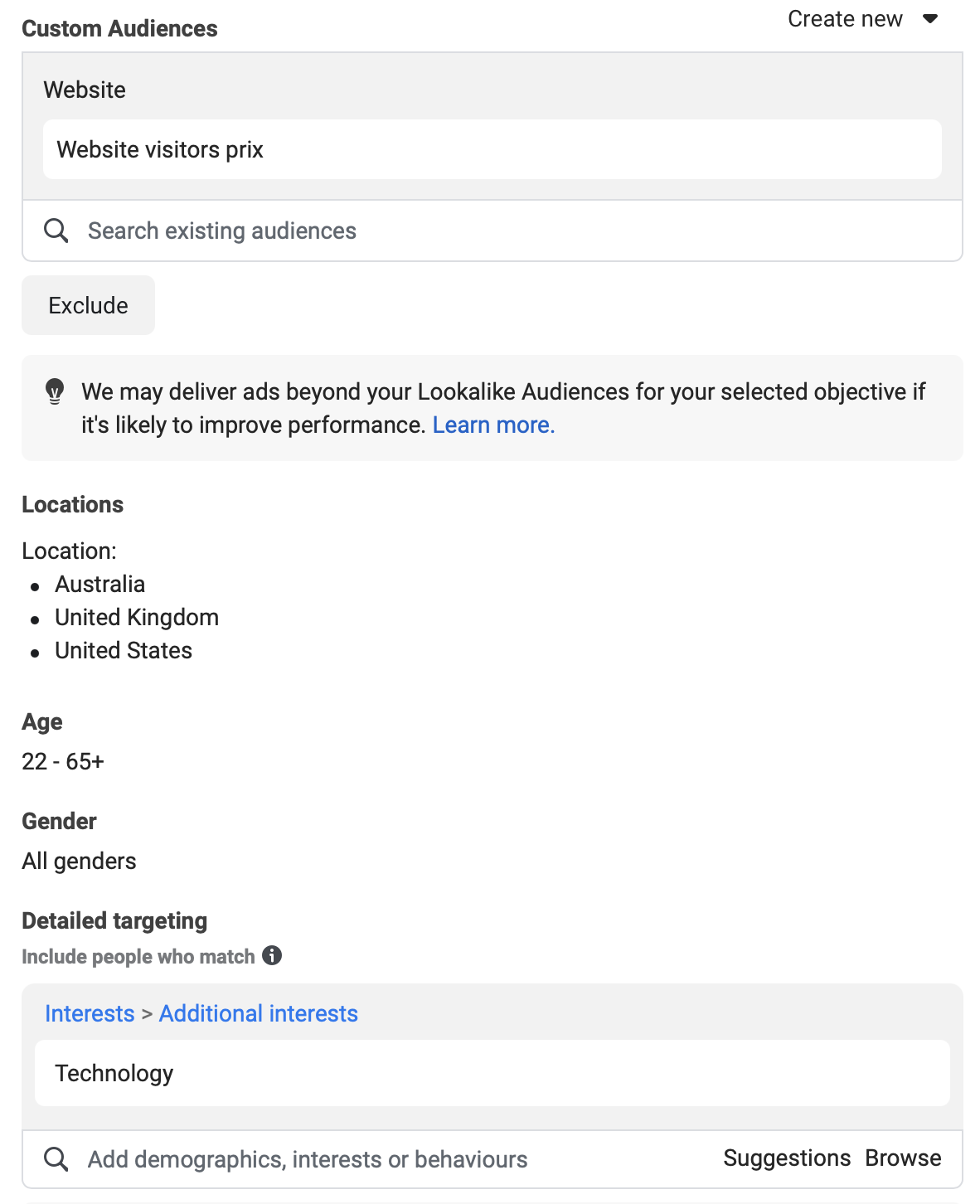
Create the custom audience "Website Visitors" and refine this custom audience with advanced targeting such as "Technology". This allows for even more specific targeting of your audience.
Facebook custom audience of all your website visitors refined with technology fans
You can use this strategy of mixing custom audiences with any other type of advanced audiences like behaviors, demographics, etc.
The limitations of this strategy
❌ You need very large custom audiences to use this strategy properly!
Strategy n°7 : A/B testing on centers of interest
Principle of A/B testing
A/B testing allows you to determine which variable is the most effective in a Facebook advertising campaign. You start by defining the variable you want to test as :
- the content of the ad (image and text)
- ad placement
- the audience of the ad: the center of interests, the sex or the gender
Once the test variable is chosen, the budget you have allocated will be split equally between the 2 campaigns (A and B).
To measure the performance, you analyze the cost per result or the cost per conversion lift by applying an exclusion or not.
As you can see, the A/B testing tool proposed by Facebook allows you to launch tests and confirm your hypotheses in a more scientific way.
Are you obsessed to know which audience will resonate more with your audience?
Then run an A/B test and you'll soon be sure which audience is more interested.
How do you do an A/B test?
Start by recording the audiences you want to test!
To do an A/B test, one way is to go to the "Experiences" part of Facebook from "Analysis and Report", you should come across this page here:
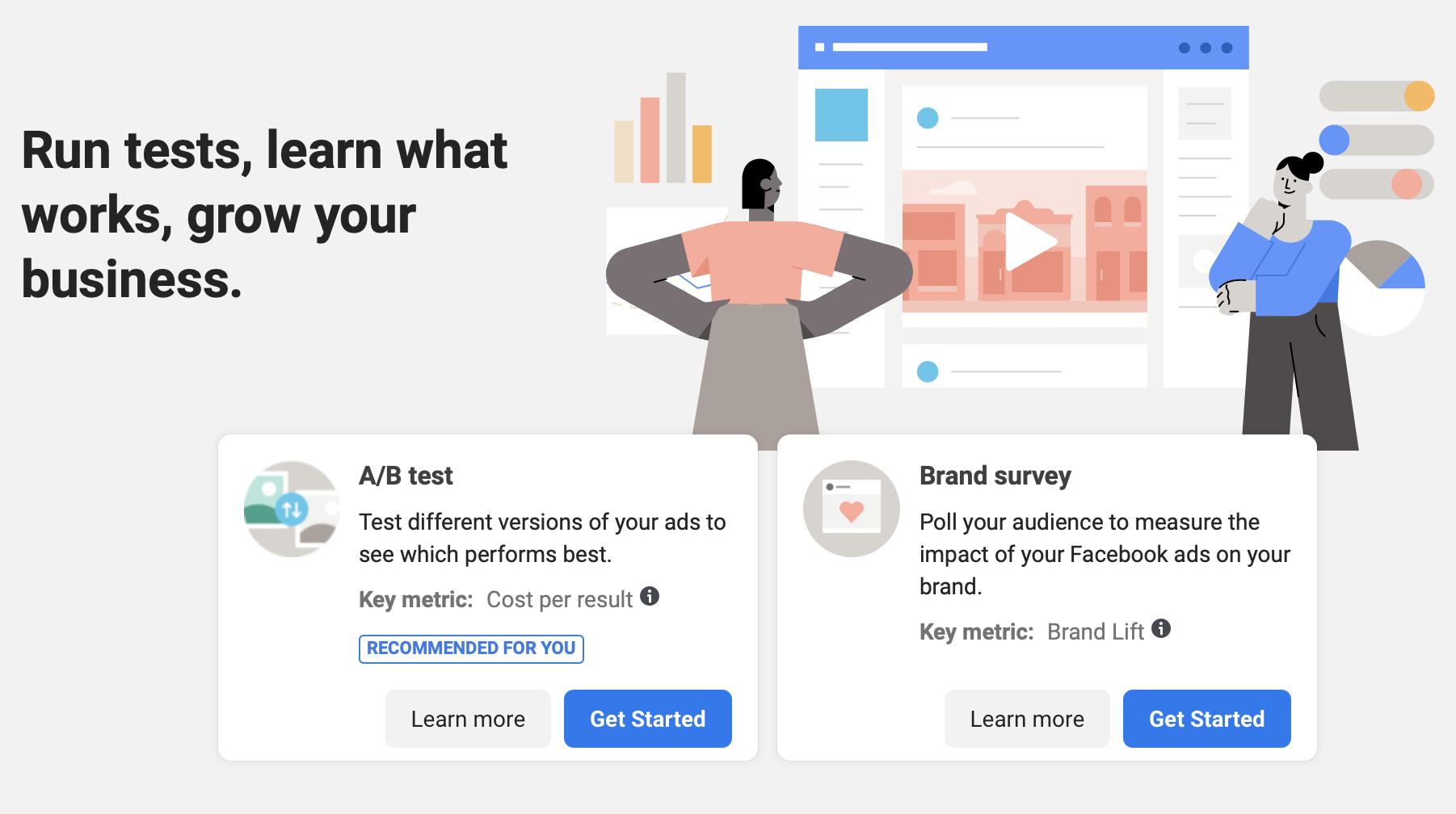
You will land on a new page where we will "create a variant". Indicate the campaign you want to test, and then choose the "Recorded Audience" variable. Select the ad set that will correspond to the variable A :
Scroll down a bit and choose the variable B which is an audience that you have recorded and that you want to test.
Finish by setting your budget, the start and end dates of the test and how you will evaluate the results.
In our example, you can set the winning audience based on cost per result, CPC, CPA or CPM:
All that's left is to launch the test and analyze the results!
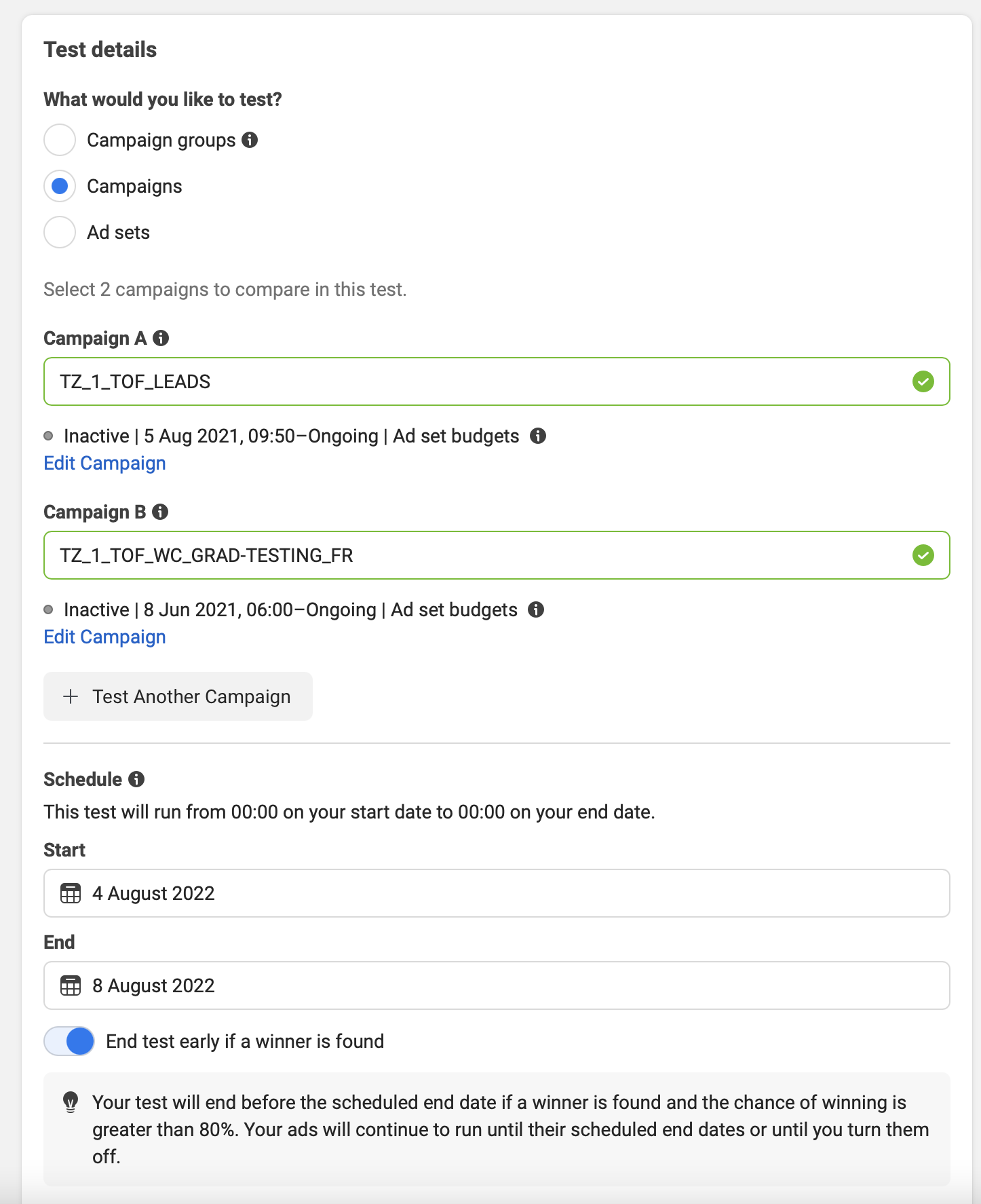
Advantages of this strategy
✅ You avoid any possible overlapping bids and audiences that could happen during advanced targeting.
Indeed, with traditional (informal) testing you can reach the same person despite 2 different audiences because they can be in the same pool.
Disadvantage of this strategy
❌ May require a large budget depending on your hypotheses you want to test.
Conclusion
We've seen quite a few interesting and powerful strategies for advanced targeting of your Facebook ads.
They all have their pros and cons, it's up to you to use them wisely for your Facebook campaigns.
If I had to give use cases here is my list:
- Strategies 1, 3 and 5 are mainly used for the testing phase and for the cold traffic of your campaigns
- Strategy 4 exclusions for remarketing campaigns by excluding visitors to the website to target
people who have interacted with a publication but have not yet gone to the website for
example.
We hope you found this guide useful and that you are now ready to explode your results with Facebook advertising.
Feel free to share your experiences in the comments.
And if you want an even bigger advantage on your Facebook campaigns, buy TargetEZ
